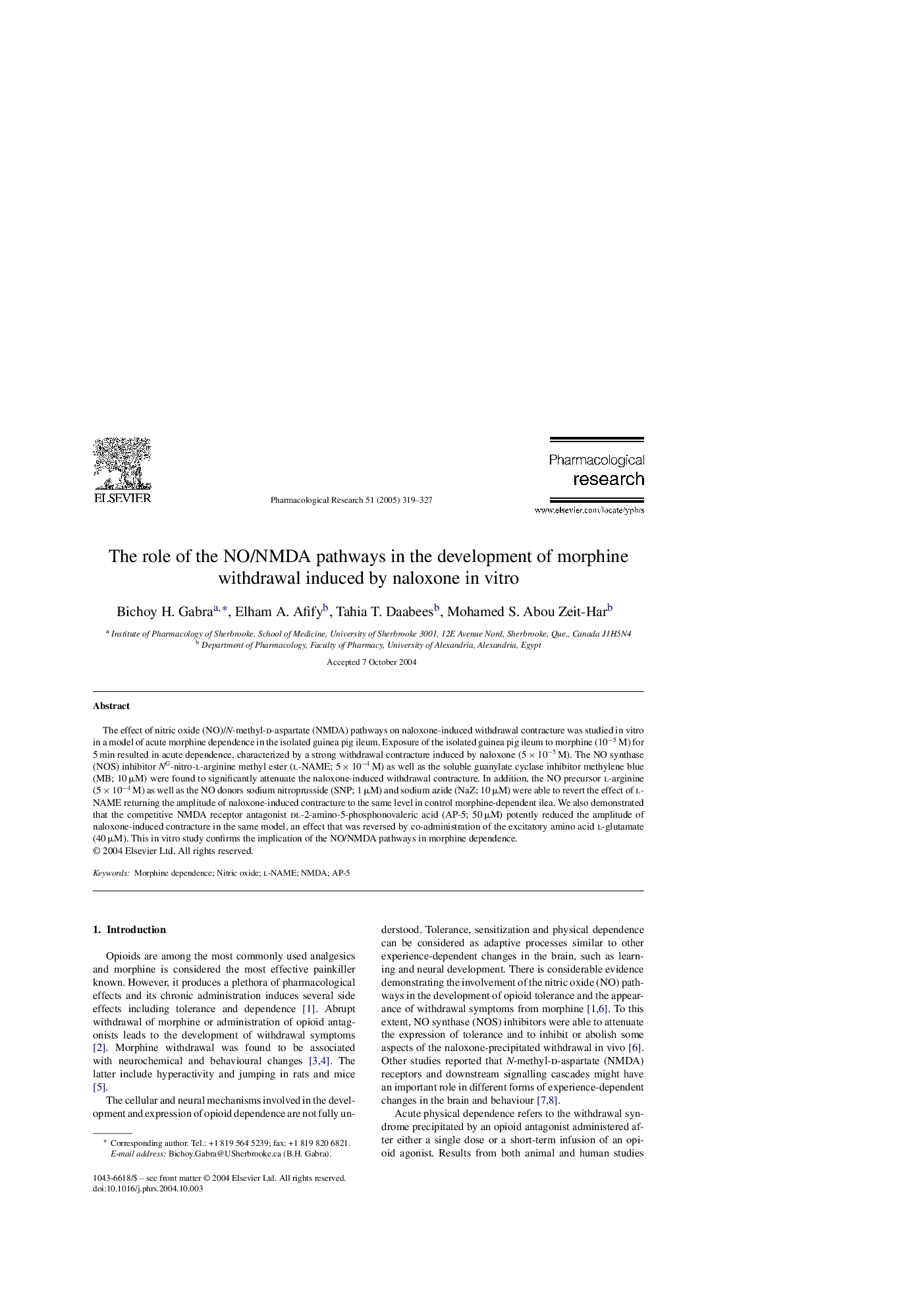| Article ID | Journal | Published Year | Pages | File Type |
|---|---|---|---|---|
| 9015257 | Pharmacological Research | 2005 | 9 Pages |
Abstract
The effect of nitric oxide (NO)/N-methyl-d-aspartate (NMDA) pathways on naloxone-induced withdrawal contracture was studied in vitro in a model of acute morphine dependence in the isolated guinea pig ileum. Exposure of the isolated guinea pig ileum to morphine (10â5 M) for 5 min resulted in acute dependence, characterized by a strong withdrawal contracture induced by naloxone (5 Ã 10â5 M). The NO synthase (NOS) inhibitor NG-nitro-l-arginine methyl ester (l-NAME; 5 Ã 10â4 M) as well as the soluble guanylate cyclase inhibitor methylene blue (MB; 10 μM) were found to significantly attenuate the naloxone-induced withdrawal contracture. In addition, the NO precursor l-arginine (5 Ã 10â4 M) as well as the NO donors sodium nitroprusside (SNP; 1 μM) and sodium azide (NaZ; 10 μM) were able to revert the effect of l-NAME returning the amplitude of naloxone-induced contracture to the same level in control morphine-dependent ilea. We also demonstrated that the competitive NMDA receptor antagonist dl-2-amino-5-phosphonovaleric acid (AP-5; 50 μM) potently reduced the amplitude of naloxone-induced contracture in the same model, an effect that was reversed by co-administration of the excitatory amino acid l-glutamate (40 μM). This in vitro study confirms the implication of the NO/NMDA pathways in morphine dependence.
Related Topics
Health Sciences
Pharmacology, Toxicology and Pharmaceutical Science
Pharmacology
Authors
Bichoy H. Gabra, Elham A. Afify, Tahia T. Daabees, Mohamed S. Abou Zeit-Har,
